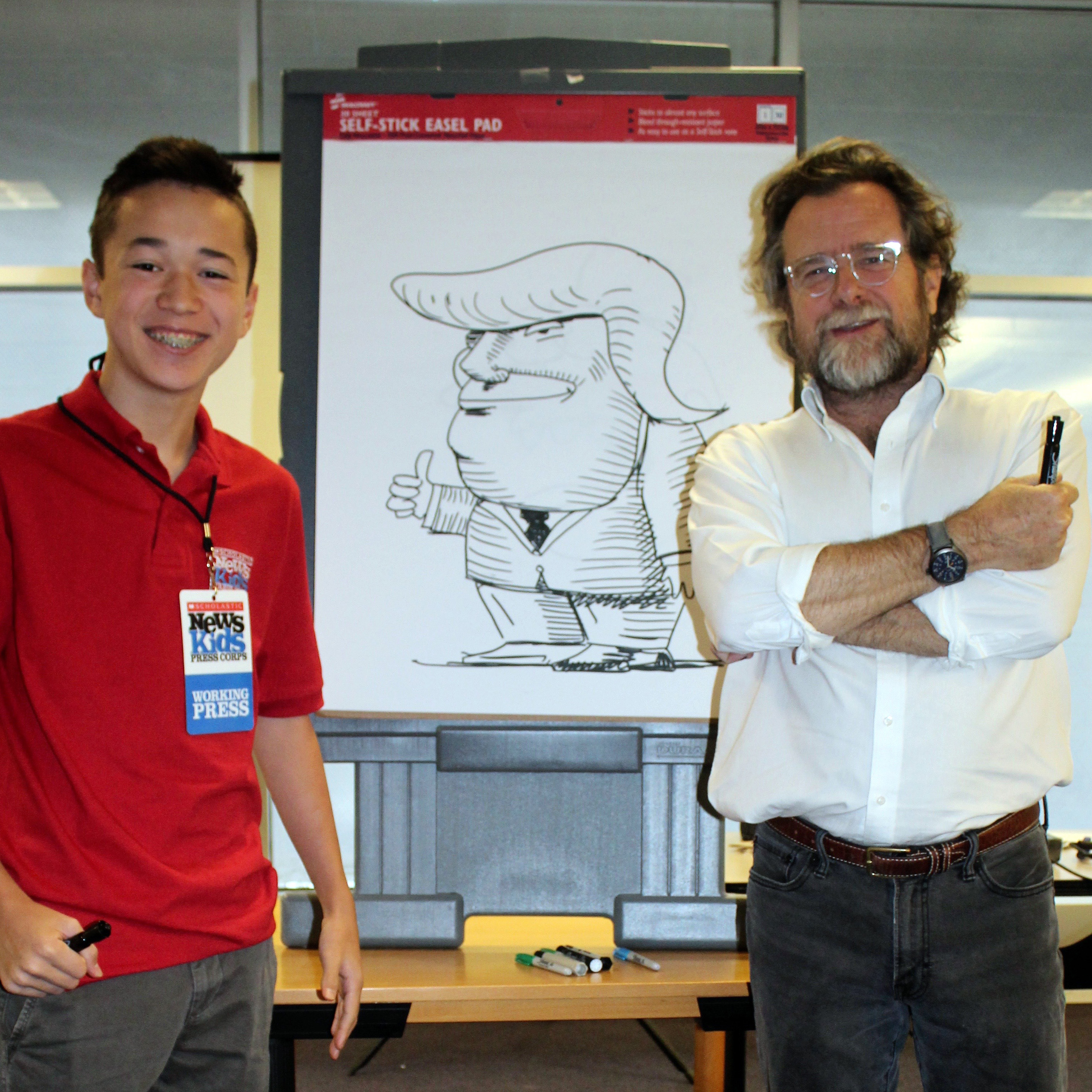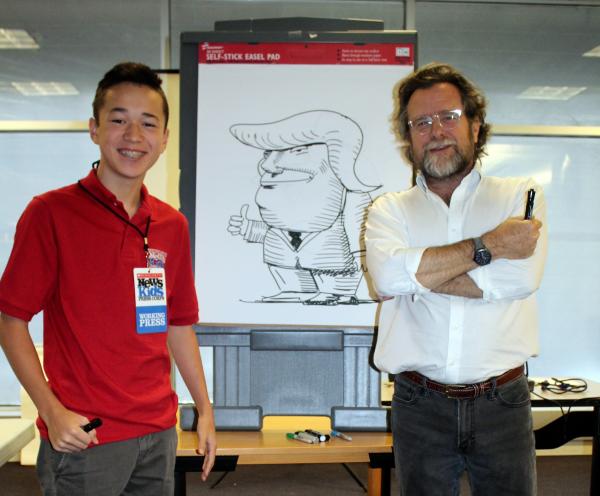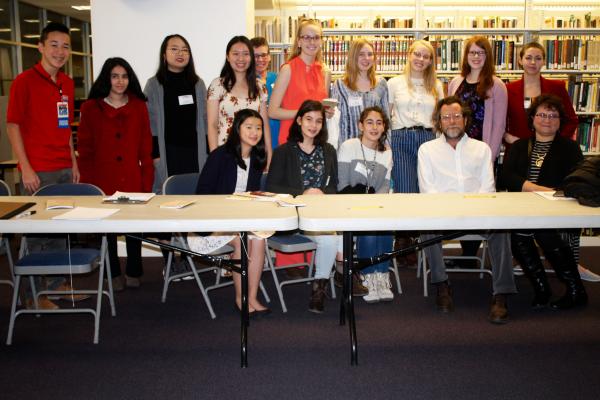KID REPORTERS’ NOTEBOOK
The Art of Political Cartooning


Maxwell with political cartoonist Matt Wuerker.
“We get paid to have an idea that we express with pictures,” says Matt Wuerker, a Pulitzer Prize-winning political cartoonist and founding member of Politico. “We’re trying to make a serious point with humor.”
On November 15, Wuerker hosted a cartooning workshop at the Lyndon B. Johnson Department of Education in Washington, D.C. The program was part of Art.Write.Now, a year-long showcase of the best teen work from the Scholastic Art & Writing Awards.
Political cartoonists use their art to call attention to social and political issues. “The reader gets the point and maybe even a laugh out of it,” Wuerker said. “People like having their brains tickled with little references.”
THE POWER OF PICTURES
The audience for political cartoons has grown in recent years with the use of cell phones and mobile tablets. Cartoonists can cross linguistic lines and even reach people who don’t read fluently.
“It only takes a second or two to take in a picture,” Wuerker said. “When someone sees a cartoon he likes or thinks is outrageous, he will share it on social media.”
Political cartoonists often have a breadth of knowledge about history, art, philosophy, and current events. “You have to be informed,” Wuerker said. “Stuff happens. I open the newspaper, and there’s lots of material.”
Wuerker creates three cartoons each week, which appear on the back page of Politico, a news publication. He has no editorial restrictions except for a copy editor who checks spelling.
“Political cartooning is an individual thing,” Wuerker said. “My opinion, my idea, my drawing is mine alone and does not represent the opinion of the newspaper.”

Maxwell with fellow award-winning student writers and artists in Washington, D.C.
CREATING CARICATURES
Wuerker uses pen and ink and watercolor for his cartoons. He likes adding crosshatching and shadows. Many other cartoonists use simple lines and digital art. They may even work with animation.
During the workshop, Wuerker gave a step-by-step demonstration to students on how to draw caricatures of President Donald Trump and former President Barack Obama. A caricature is a loaded portrait because it exaggerates a person’s prominent features. For example, Obama has a big smile, while Trump has wavy hair.
Wuerker advised against using a photo reference when creating a cartoon. Instead, he conjures up a memory or an abstract image. “These are people you see every day on the news,” he said. “You already have an image in your head.”
Wuerker explained that most public officials realize that politcal cartoons come with the territory. “Targets don’t mind it,” he said. “In fact, they actually like it and embrace it.”
“FIND YOUR OWN VOICE”
Wuerker’s first published cartoons were in his high school newspaper. “You have to put your stuff out there,” he advised aspiring cartoonists. “Don’t worry about what others think or say about it. Share it.”
When practicing your craft, Wuerker suggested focusing on the process over the finished product. “Don’t get attached to the actual paper,” he said. “Keep your pen loose. Keep your head loose. Experiment. Copy others, and then find your own voice and style.”
